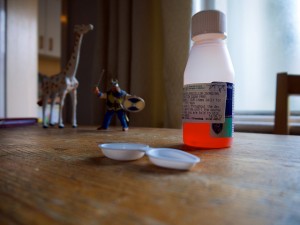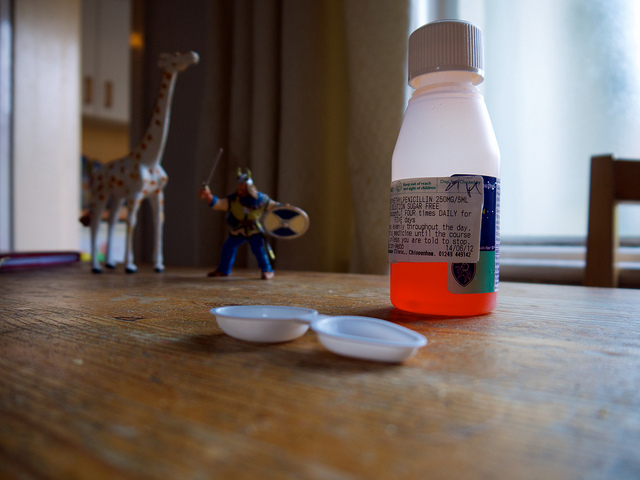 Children are the most susceptible to diseases because their immune system is developing and their body is not as strong as that of an adult. Children normally catch these diseases from the environment they live in. The environment could be both of the indoors and the outdoors.
Children are the most susceptible to diseases because their immune system is developing and their body is not as strong as that of an adult. Children normally catch these diseases from the environment they live in. The environment could be both of the indoors and the outdoors.
The best way to protect our children is to know about the diseases that exist in our surroundings. In recent years, we did hear about outbreaks of several diseases which doubled our concerns and worries. So, here are some of the diseases which exist in South Orange and around other parts of the world. These disease are common and most of them can be prevented but they still can be a risk to your child’s health. Read on to find out about these diseases and then plan up to save your child from them.
Disclosure: This post is for informational purposes only. I am not a health care professional and if you think that your child has an illness or disease, please contact your child’s doctor or health care professional. In the event of an emergency, please call 911 or go to the nearest emergency room.
Hand, Foot and Mouth Disease
Hand, Foot and Mouth disease is a common contagious illness in children of ages 1 to 4 years old. It is usually caused by coxsackievirus, a virus from the enterovirus family. These viruses live in the body’s digestive tract and spread from person to person, generally on unwashed hands and surfaces contaminated by feces.
Children catch the illness from the infections present at preschools, child care centers and other places where kids remain close to each other.
The illness generally lasts for 3 to 5 days, but the symptoms could be quite painful. Some symptoms of HFM disease are blisters in the throat, on the tongue, gums, hard palate, or inside the cheeks. These blisters are red with a small bubble of fluid on top and they often peel off, leaving sores with a reddish base. Other signs that you might notice are fever, muscle aches and flu-like symptoms. And your kid might get irritable, sleep more than usual, drools and would want to drink cold fluids.
The treatments are Acetaminophen or ibuprofen for aches, sores and fever; ‘magic mouthwash’ and cold foods (like ice cream) to numb the area and ease the pain while swallowing and antibiotic ointments for the blister pop. Hand or feet with blisters are recommended to be washed with lukewarm water and kept uncovered. And ensure that your child drink plenty of fluids to stay hydrated. In case you are unable to control the disease and if the matter seems to go worse, then immediately call your doctor or reach out to a reliable urgent care clinic in South Orange.
The only way to prevent this disease is hand washing. This habit should be in you and in your kids, so wherever they go they do wash their hands and the chances of catching the illness are reduced.
Measles
Many cases of measles have been already confirmed this year in the Orange County.Measles are spread by getting in contact with the droplets from the mouth, nose or throat of the infected person. Sneezing and coughing of that person does contaminate the air and set others at risk. Vaccination can develop immunity against measles, but many parents believe that the MMR vaccine (which protects against measles, mumps and rubella) causes autism. This myth keeps them from employing such vaccinations for their children.
Symptoms usually start to appear in 8 to 12 days after exposure to the virus. The symptoms could be cough, fever, bloodshot eyes, rashes, itchiness, light sensitivity, muscular pains, runny nose, sore throats and tiny white spots inside the mouth.
The treatments to relieve the symptoms are Acetaminophen, humidified air and bed rest. Some children might also need supplements of Vitamin A. Knowing the symptoms and the treatment does not mean that you should not see a doctor, as the infection might lead to complications like bronchitis, encephalitis, ear infection and pneumonia.
The only way to prevent it from happening is through immunization.
Whooping Cough
Whooping coughis a bacterial infection caused by the bacterium Bordetella pertussis, which affects the respiratory system. The condition is characterized by nasal discharge, fever and long fits of coughing followed by wheezy breathing and possibly vomiting. This begins from seven days after exposure to the condition. And symptoms are typically worse at night.
The annoying cough has been known to go on for up to 3 months, while the infectiousness wears off within five to seven weeks. Antibiotic treatment is usually successful leading to a full recovery. And breathing in fresh air is highly recommended during this time. Due to the risk of vomiting, it is suggested to give more small meals to the child, instead of a few large ones.
Children can get vaccinated against the condition with a series of three injections, one month apart starting at 2 months; and again with a ‘pre-school booster’ injection aged between 3 and 4 years.
Image Credit: Flickr via Creative Commons

Comments
12 responses to “6 Common Childhood Diseases”
It’s always best to look for the symptoms of these diseases, you don’t want your child getting the worst of it when it goes unnoticed to you!
I agree, plus you don’t want them spreading it to their friends, classmates, ect.
I had my son vaccinated against these diseases. Vaccines don’t come cheap here in the Philippines, and I consider these as one of my biggest investments during my son’s childhood years. 🙂
It was a great investment. Thankfully, in the states our health insurance covers it.
I remember my boys got Fifth’s Disease while at daycare years ago. He had a rash that didn’t bother him but no other symptoms. They said that by the time it shows up as a rash it’s no longer contagious, that’s what the pediatrician said anyway. I guess that’s pretty common too
I haven’t had to deal with Fifths disease. However, I got a note from the school when I was pregnant with my youngest. Once I saw the letter I got scared because it can cause complications during pregnancy. Luckily, my son wasn’t exposed so I ended up worrying for no reason.
Great information indeed. I remember back in the 70's I had measles and my two sisters had chicken pox all at the same time. Thanks for sharing.
Reading your post reminded me of how far we have come with treating ailments. Thankfully we have treatments that work here. In some parts of the world drugs are not so readily available.
Medicine has come a long way and some of the technology is amazing. My daughter is able to hear thank to modern medicine.
i am very lucky that my daughters have been very blessed and haven’t had any of these. i know it can happen to pretty much any child. this is why i feel blessed.
My kids got hand foot mouth disease and they were miserable. We thought my youngest also had a case of rosela but not positive.
I bet your mom was miserable with all of you being sick at the same time. Of course, it was probably better than it being spread our over several weeks.